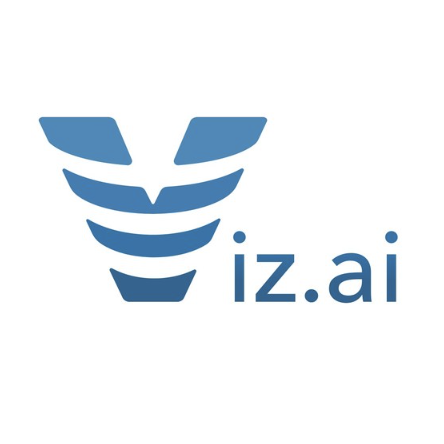Any fintech startup needs a robust financial infrastructure. At the core of this infrastructure is the chart of accounts (COA), a fundamental tool that organizes a company’s financial transactions and provides invaluable insights into its financial health.
A well-structured chart of accounts can empower fintech founders and CEOs to effectively manage their finances, make informed strategic decisions, and generate sustainable growth in the dynamic landscape of financial technology.
Fintech startups have distinctive requirements
Fintech startups leverage technology to innovate and disrupt traditional financial services. These startups typically offer digital solutions and platforms to enhance financial processes, including payments, lending, investments, insurance, and even personal finance management.
What unique chart of accounts do fintechs use?
That means your fintech’s COAs will have some unique categories that other types of businesses may not need. In fact, there is a huge possible variety of accounts that a fintech company may have based on its business model - for example, insurance companies will have very different looking income statements and balance sheets vs. crypto companies, which all drive very different chart of accounts. Kruze Consulting uses six-digit accounting codes in our charts of accounts, which allows us to create more unique accounts in each category, to capture more information. We have more detail on charts of accounts here.
We use the following categories and number groupings:
| Current Assets | 100000 -199999 |
| Liabilities | 200000 - 299999 |
| Equity | 300000 - 399999 |
| Sales | 400000 - 499999 |
| Cost of Good Sold | 500000 - 599999 |
| Sales, General, and Administrative Expenses | 600000 - 699999 |
| Research & Development Expenses | 700000 - 799999 |
| Other Operating Expenses | 800000 - 899999 |
| Other Income / Expenses | 900000 - 999999 |
Under these accounts, you’ll find sub-accounts that roll up into the main asset category. The first digit of each account number indicates which group the account belongs to.

The table below shows some of the different types of accounts a fintech firm may need, along with some of the more standard account types. The account numbers follow Kruze’s standard numbering system, but individual account numbers could vary.
NOTE: This is not a comprehensive list – this is just a sample of the accounts your fintech company may require. Again, fintech business models are so different you really need to work with an accountant to make sure you are getting the right ones for your business.
Fintech specific chart of accounts
| Account Number | Account Name | Account Type | Detail Type |
| 104000 | Cash | Current Assets | Checking |
| 105000 | Cash in Bank | Current Assets | Checking |
| 120000 | Accounts Receivable | Current Assets | Accounts Receivable |
| 131100 | Prepaid Expenses | Current Assets | Prepaid Expense |
| 159000 | Accumulated Depreciation | Current Assets | Accumulated Depreciation |
| 210000 | Accounts Payable | Liabilities | Accounts Payable |
| 235100 | Accrued Expenses | LIabilities | Accrued Expenses |
| 301000 | Common Stock - Par Value | Equity | Common Stock |
| 301002 | Common Stock - Additional Paid-In Capital | Equity | Common Stock |
| 309000 | Retained Earnings | Equity | Retained Earnings |
| 401000 | Service Fees | Sales | Service Revenue |
| 505000 | Hosting Fees | Cost of Goods Sold | Other Costs of Services |
| 601000 | Marketing and Advertising Expenses | SGA Expense | Marketing |
| 601009 | Cash Back Rewards | SGA Expense | Marketing |
| 601600 | Sales & Marketing - Sales Commission | SGA Expense | Sales Commissions |
| 604100 | Professional Fees - Legal | SGA Expense | Legal & Professional Fees |
| 700000 | Research & Development Expense | R&D Expense | Other Business Expense |
| 810000 | Depreciation Expense | Other Operating Expenses | Depreciation |
| 901000 | Interest Income | Other Income / Expenses | Interest Income |
For a fintech firm, there are several unique accounts that may not be part of a standard chart of accounts.
Here are some potential unique accounts specific to this type of business:
- Cash Back Rewards. This account tracks the cash back rewards earned by customers who use the firm’s banking services. It represents a liability until the rewards are redeemed by customers.
- Banking Service Fees. This account tracks the fees charged to customers for various banking services provided by the firm, such as transaction fees, overdraft fees, or account maintenance fees.
- Marketing and Advertising Expenses. Since the firm may need to promote its banking services to attract renters, it may have specific expenses related to marketing and advertising campaigns targeting potential customers.
- Transaction Processing Fees. This account tracks fees charged for processing financial transactions, such as credit card transactions, electronic fund transfers, or cryptocurrency transactions.
- Platform Usage Fees. Reflects revenue generated from usage fees for accessing or utilizing the fintech platform or service, such as subscription fees for software as a service (SaaS) products.
- Regulatory Compliance Expenses. Tracks expenses associated with ensuring compliance with financial regulations and standards, including costs related to regulatory filings, audits, and compliance software.
- Technology Development Costs. Accounts for expenses related to the research, development, and implementation of proprietary fintech software, algorithms, or technologies.
- Cybersecurity Expenditures. Tracks costs associated with maintaining robust cybersecurity measures to protect against data breaches, fraud, and other cyber threats inherent in the fintech ecosystem.
- Customer Acquisition Costs. Records expenses incurred to acquire new customers, including marketing and advertising costs, referral bonuses, and sales commissions.
- Licensing and Compliance Fees. Tracks expenses related to obtaining licenses and permits necessary to operate legally in the fintech industry, as well as ongoing compliance fees required to maintain regulatory approval.
These unique accounts provide insight into the financial dynamics of a fintech company and help management make informed decisions to drive growth and profitability in this rapidly evolving sector.
The process of building a chart of accounts for your fintech startup begins with a review of your business to create a list of the types of accounts you’ll need.
To find out more about setting up a COA for your business, contact us.








